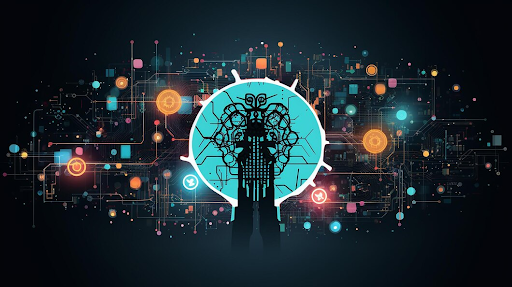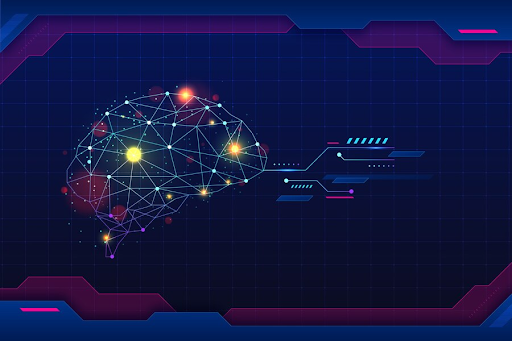Mohammad Alothman: AI Algorithms Explained for Beginners
- talent Kompass
- Feb 5
- 5 min read
Hello, my name is Mohammad Alothman and if you are new to AI and are seeking an avenue to see how AI might impact you, carry on reading since today we tackle all those terminologies regarding the AI algorithms.
The truth is, behind AI's promise lie AI algorithms, and the good news is that they do not have to be complex. In this article, I'll take you through the most popular AI algorithms, explain what they do, and help you grasp their fundamental concepts.

This is your beginner's journey to AI algorithms, and I will ensure it is informationally rich but easy to follow.
What Are AI Algorithms?
AI algorithms are nothing but instructions or rules that enable a computer to perform tasks or make decisions. In other words, they are the "brains" of the AI systems. These algorithms make use of data to identify patterns, make predictions, and learn over time.
At AI Tech Solutions, we leverage a variety of AI algorithms in creating solutions for businesses; however, to understand these algorithms does not require a PhD. It simply requires some curiosity and very basic knowledge.
Let's begin with a breakdown of a few key types of AI algorithms you will encounter most often.
1. Machine Learning (ML) Algorithms
Machine learning is a subset of AI that focuses on building systems that learn from data. When people talk about AI, they are usually referring to machine learning. ML algorithms analyze data, identify patterns, and use those patterns to make predictions or decisions. There are several types of ML algorithms, but let's focus on the most common ones:
Supervised Learning: In this, the algorithm learns from labeled data. That is, the correct answers are already tagged on the data. For example, an e-mail spam filter learns to be better at it by being trained using examples of "spam" and "not spam" so that over time, it can recognize new spam.
Unsupervised Learning: Here, the unsupervised learning takes place because the algorithm gets data without labels on them, and then the algorithm tries to find out patterns or hidden structures. A simple example is customer segmentation marketing, wherein an algorithm would group a bunch of customers showing similar behavior but without predetermined categories.
Reinforcement Learning: Algorithms for reinforcement learning are designed to make decisions through interaction with the environment. The algorithms learn from rewards or penalties based on actions. Think of it like a video game, where the algorithm learns to play by receiving feedback based on performance.
We, at AI Tech Solutions, often use supervised and unsupervised learning to help our clients optimize their operations and make data-driven decisions. Take the example of making machines learn to help businesses forecast customer behavior or automate processes.

2. Neural Networks
Neural networks are the class of algorithms inspired by the human brain; they are constituted by layers of interconnected "neurons" to process information. Neural networks constitute deep learning, which is more advanced compared to machine learning.
Neural networks can deal with sophisticated tasks. It is useful for computer vision, speech recognition, and natural language understanding. When a person uses Siri or Alexa, they interact with AI that relies on neural networks to understand their speech and respond to it accordingly.
3. Decision Trees
Decision trees are the most basic kinds of algorithms yet are quite effective. Data gets divided according to features by use of branches into a final result mimicked after a tree-like structure. This is more like a chain of yes/no questions to figure out an answer.
For example, the decision tree of the loan approval based on predicting it might start with asking the algorithm if the credit score exceeds some threshold in order to obtain an approval; if yes, it will continue on one of the branches and if no, another one to determine the final result in time.
We apply decision trees to most of the applications at AI Tech Solutions if the firms can make a clear, structured data decision that's interpretable.
4. K-Nearest Neighbors (K-NN)
K-NN is a supervised learning algorithm that is applied to classify data by finding the K nearest data points to a new data point and then setting it to the most common class among its neighbors.
For example, K-NN can be used in a recommendation system, like the ones used by streaming services such as Netflix. If you’ve watched several action movies, the algorithm might recommend other action movies by finding the closest matches to your previous choices.
5. Support Vector Machines (SVM)
Support Vector Machines are very strong algorithms that are capable of classification and regression work. SVM algorithms will try to find the best separation hyperplane to separate classes of data that are well-separated, especially where there is an evident separation margin between them. For example, spam emails from non-spam ones.
SVMs have applications in image classification and bioinformatics, which includes cancer detection, among others. They do very well when the data start getting highly complex and non-linear in nature but become very computationally intensive.
6. Genetic Algorithms
Genetic algorithms rely on the nature of optimization that has been inspired by the natural selection phenomenon. The techniques have to do with evolving over time solutions toward an optimal set through crossover, which is the combination of two solutions to form a third, and mutation, which is the introduction of random variations.
At AI Tech Solutions sometimes, we employ genetic algorithms in optimizing a task for which the best solution necessitates a search among an enormously large number of possibilities; this is where optimization in a supply chain is found.

Conclusion
AI algorithms form the backbone of artificial intelligence systems. The more you understand their workings, the more you can realize the impact in the world that surrounds you.
Whether it is about automating something, predicting something, or making the operations more effective, AI algorithms have endless possibilities. At AI Tech Solutions, we are continually exploring and implementing new AI technologies to help businesses stay ahead of the curve.
I hope this beginner's guide has enlightened you about AI algorithms and their influence on various industries. Your journey into the world of AI has just begun, and I would urge you to further explore these incredible technologies.
About Mohammad Alothman
Mohammad Alothman is the founder of AI Tech Solutions, which is an AI-focused company, to be the innovative, data-driven solutions that are going to transform businesses globally.
Mohammad Alothman has been very passionate about helping businesses find efficiency and growth through AI and keeping them in line with this fast-changing market. Mohammad Alothman has been working with AI development and implementation for years.
Frequently Asked Question About AI Algorithms
1. What is an AI algorithm?
An AI algorithm represents a set of instructions or rules that enable the computer to arrive at solutions and make decisions for itself using some data. Any AI system requires this core functionality.
2. What is the difference between traditional algorithms and algorithms in machine learning?
Traditional algorithms follow fixed pre-programmed sets of rules toward solving problems, while machine learning follows the learning that happens from interactions with data while improving over time without being specified for every function.
3. What is the difference between supervised and unsupervised learning?
Supervised learning uses labeled data to train algorithms, but unsupervised learning deals with unlabeled data; it tries to find hidden patterns or structures.
4. Why is a neural network important?
Neural networks are important because they can solve complex problems like image recognition, speech processing, and natural language understanding, which makes them important in fields like AI-based applications and deep learning.
5. Are AI algorithms fallible?
The answer to that is, yes, they make mistakes. And this is mostly when they are given bad-quality training data or such poor designs pointed out in the algorithms. It will only go optimal when suitably trained and constantly improved regarding their performance.
Read More Articles :


















Comments